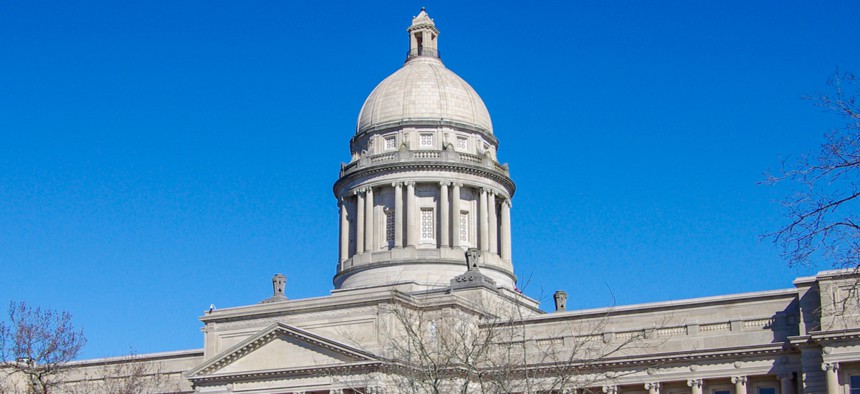Analyzing 46 of This Year’s State-of-the-State Addresses

The Kentucky State Capitol in Frankfort. Shutterstock

Connecting state and local government leaders
According to a new report, here are the big topics governors talked about—or sidestepped—in their 2018 policy speeches.
The Marjory Stoneman Douglas High School students are right, of course, when they say elected officials will have to be forced to take up the gun debate in earnest.
Need more evidence?
Forty-six governors delivered State of the State speeches laying out their policy priorities this year. The governors delivered those speeches as legislative sessions got underway at the beginning of the year—before the Parkland, Florida shootings, yes, but only months after the Las Vegas shootings—and only seven of those speeches included any reference to gun violence.
What about cybersecurity?
Safe to say, cybersecurity in the context of election integrity has been another enormous political story this year—and one that shows no sign of fading any time soon. Nevertheless, only five governors from a cluster of northern plains and mountain states mentioned it in their big annual address to state lawmakers and constituents.
All of the 46 State of the State speeches have been compiled as a dataset and broken down for analysis by Quorum Analytics, the three-year-old Washington, D.C.-based trend-spotting startup best known for its data-driven “Moneyball” approach to assessing the workings of Capitol Hill. The company says it “tracks legislation and dialogue from elected officials in Congress, state legislatures, thousands of U.S. cities, and the European Union.” This week, it has posted some of the key findings from its “2018 State of State Speeches” for browsing. The full report looks at more than 50 different policy topics addressed by the governors.
So what did our state leaders talk about?
Nearly all of them spoke about education—every single one of them except Democrat Dannel Malloy, governor of Connecticut. Of course they spoke about education. Public education is an overwhelmingly state-and-local business. State governments pay an average 46 percent of school budgets, local governments pay for another 45 percent, and the federal government pays the rest.
What else?
Thirty-seven governors spoke about workforce development and 33 addressed the opioid-addiction crisis.

Many of the findings from the speeches posted by Quorum come as little surprise when viewed through a partisan lens: More Republican governors spoke about deregulation than did Democratic governors, for example. More Democrats addressed climate change than did Republicans.
But there’s also this:
Twenty-four of the governors spoke about bipartisanship, 10 Democrats and 14 Republicans. In fact, it was one of the most bipartisan of the 13 topics posted by Quorum, second only to transportation.
John Tomasic is a journalist who lives in Seattle.

NEXT STORY: Justice Dept. Reaches Deal With West Palm Beach on Its ‘Welcoming City’ Resolution




